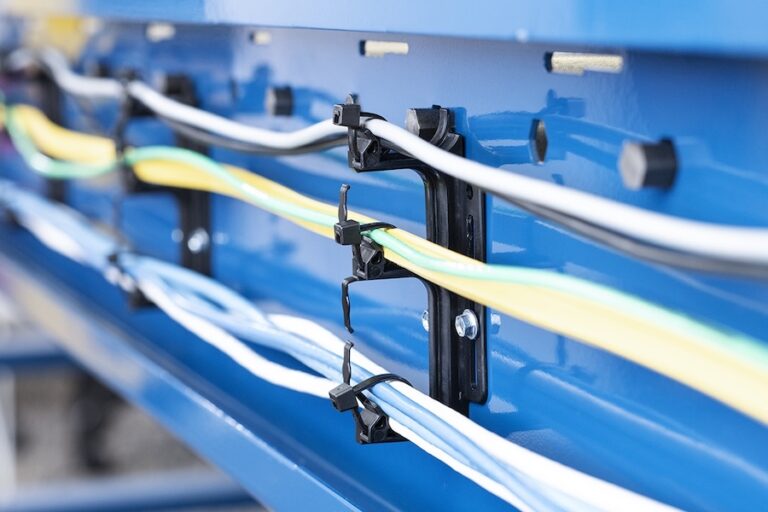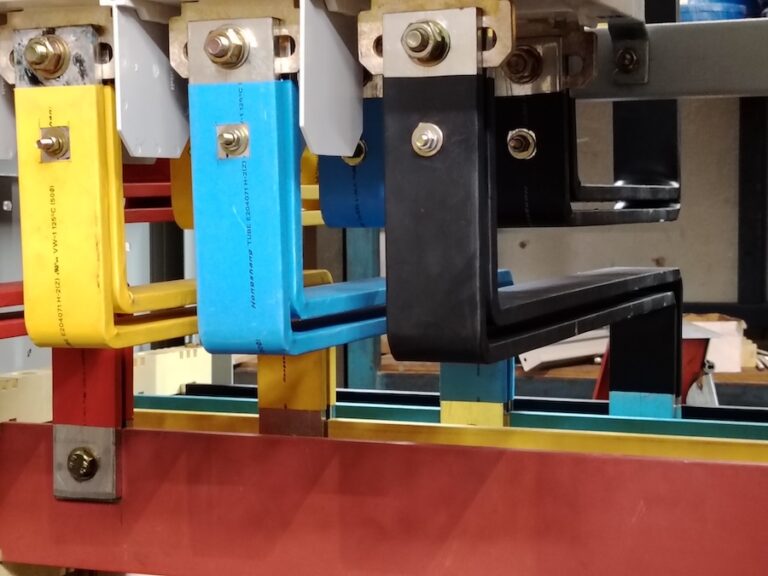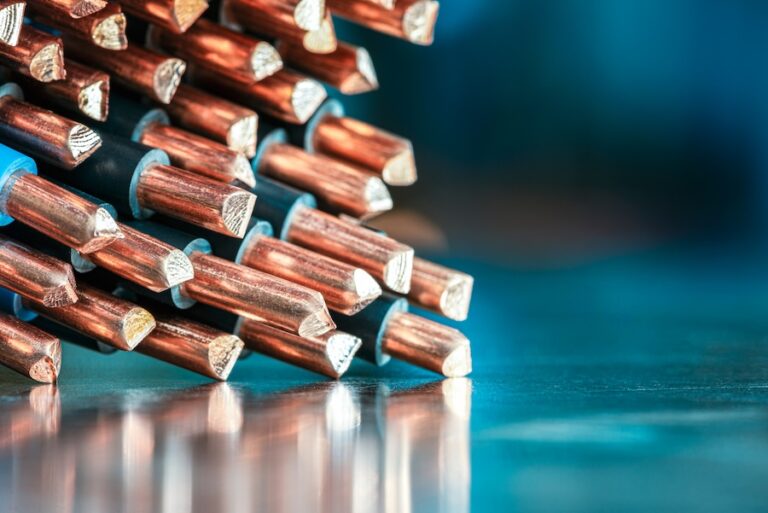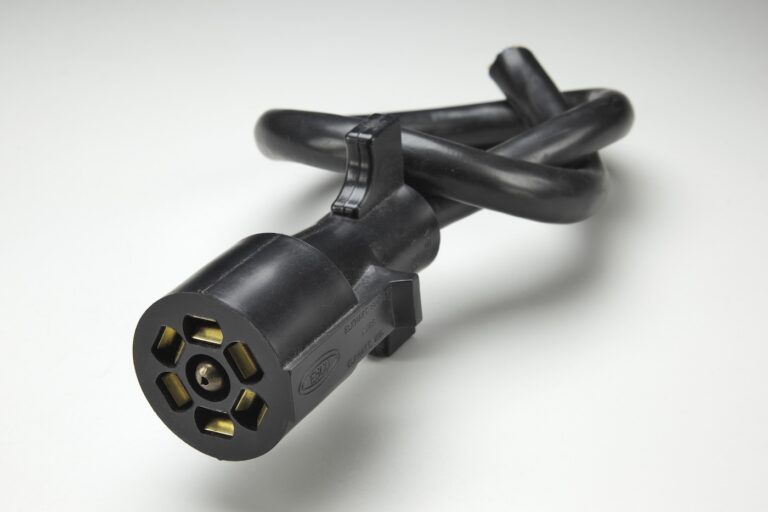Choosing a Conductor for Your Cable – A practical guide
By Multi/Cable
INTRODUCTION:
At the core of your standard or custom cable is a conductor, the metallic wire which allows for the flow of electric current. The success of your application depends on the conductor’s ability to effectively carry the electrical load – without breaking, corroding, oxidizing, or otherwise failing – throughout the product’s lifetime.
Thus, as a key component of your cable and your overall application, the conductor should be selected carefully, with thought given to its size, material, flexibility, conductivity, and service temperature, among other factors.
This guide will walk you through the preliminary considerations that should be made before ordering your cable, including your application requirements, environmental conditions, and electrical parameters.
- SELECTING A CONDUCTOR MATERIAL
Conductivity & Cost
Metals are the best conductors of electric charges—but not all metals are equally up to the task. Table 1.1 shows the top electric conductors (the list includes both pure metals and alloys).
Corrosion
If the cable will be used in an environment with high humidity or near salt water, or with certain connectors which require the conductor to be exposed, bare copper could quickly corrode. In these situations, utilizing a copper alloy or tinned copper would offer additional protection from corrosion.
Service Temperature
If the application requires high temperatures, a copper conductor with silver plating or nickel plating would be recommended. As shown in Table 1.2, plating can drastically increase the service temperature and prevent oxidation of copper conductors. While nickel is less conductive of electricity than copper, it is the best choice of coating for applications requiring very high and sustained temperatures.
Typical Conductor Materials
Table 1.3 examines some of the more typical conductor materials with their pros and cons.
- STRANDED VS. SOLID CONDUCTORS
There are two options for the construction of your cable’s conductors: stranded and solid. Stranded means multiple smaller conductors are twisted together to make a larger conductor. A solid conductor refers to a single, solid wire. Each construction has benefits and drawbacks—so again, the conditions of your application should be considered when making this selection.
Stranded Conductors
Stranded conductors consist of multiple thinner conductor wires combined to act as a larger conductor with a higher gauge. Multiple conductor stranding options are available, depending on your needs (see Table 2.1).
The primary benefit of stranding is flexibility—the construction of stranded conductors makes them less rigid and stiff than their solid counterparts. As a rule, higher conductor flexibility can be achieved by increasing the number of strands, and decreasing the strands’ diameter.
While stranded conductors are typically more expensive than solid conductors, they also offer easier installation and longer lifespan (in typical applications), so in the long term they may be a more cost-effective choice.
Stranded Conductor Applications – Flexible stranded conductors are a good choice for applications such as circuit boards, where a wire may need to twist and bend intricately. Stranded is also a good choice where the conductor will be subject to repetitive motion or to vibration (such as in robotics), as they can endure these factors better than a solid conductor.
Solid Conductors
As the name suggests, a solid conductor consists of a single metallic core. This is usually much thicker than the individual wires found in stranded conductors.
While this option is less widely used, and offers less flexibility, solid conductors are more rugged and durable than their stranded counterparts. And thanks to their simple construction, solid conductors also offer the benefit of lower cost.
Because a solid conductor lacks the spaces between multiple wires, its diameter can be more compact than a stranded conductor, without a decrease in carrying load. This lack of empty spaces also makes solid conductors better at preventing electronic interference.
However, it is important to remember this rigidity can also be an obstacle in many applications. If used in an environment where the cable is subject to frequent motion, a solid conductor will become worn more quickly. Thus, a cable that was initially lower cost will turn out to be less cost-effective. This factor may be disregarded in applications intended to have a shorter lifespan.
Solid Conductor Applications – Because of their inherent durability, solid conductors are frequently used in applications where harsh conditions may be present—especially if the conductor will be exposed to adverse weather. When corrosion is possible, a solid construction can offer better performance and a longer lifespan. Both blasting wire (which connects a detonator to an explosive device) and direct burial wire (e.g., used to connect homes to a power transformer) utilize solid conductors.
- HOW MANY CONDUCTORS DO I NEED?
Once you have determined the exact conductor type needed for your application, your next question will be, how many conductors do I need?
Depending on the requirements of your application, your cable can have one or more conductors – even hundreds of them. The typical range is 2–100, but the number will ultimately be determined by the needs of your application – how many circuits it contains that need to be connected, and whether spare wires are desirable.
- CONDUCTOR SIZES
The size of the conductor wires should be selected based on the necessary power load of your application, as well as any physical requirements your application has.
Refer to the Stranded Conductor Data (Table 5.1) and Solid Conductor Data (Table 5.2) tables for information on sizing and power to find the AWG size that meets your needs.
About AWG – In the United States, wire sizes are measured with the American Wire Gauge (AWG). AWG is a standardized stepped wire gauging system for the diameters of round, solid, nonferrous, electrically conductive wire. Higher numbers indicate cables with smaller diameters.
Current-Carrying Capacity
Can your conductor(s) safely carry the necessary current? Of course, higher voltages mean higher temperatures, but there’s more to consider. Don’t overlook these factors, which can contribute to overheating:
- Ambient Temperature: Is your cable for an indoor or outdoor application? What do you anticipate the temperature and/or weather conditions typically being? Will adequate ventilation be available along the conductor’s entire length?
- Construction Type and Diameter: When multiple (stranded) conductors are cabled together in any construction type, more heat will be produced.
- Insulation: You’ll need to think ahead here about what insulation material is best to use – choose one that is rated to handle the anticipated temperatures, at minimum.
Voltage Loss
Voltage loss does not typically need to be considered unless your wire run will be quite long (25’ or more). In these situations, voltage loss can be minimized by appropriately selecting your conductor:
- Materials with better conductivity (e.g., copper) will lose less voltage than those with lower conductivity (e.g., aluminum)
- Shorter wires will lose less voltage than longer wires (when comparing cables of the same AWG). For short runs (under 25’), drops in voltage are considered negligible.
- Thicker wires will lose less voltage than thinner wires (when comparing cables of the same length).
ABOUT MULTI/CABLE
Multi/Cable Corporation is a leading manufacturer of multi conductor, multi-pair / triad and specialty composite wire and cable. Since 1975, we have supplied customers around the world with cables for their most critical applications. Should you require more data for your application, visit www.multicable.com, or contact their experts at (860) 589-9035



























































